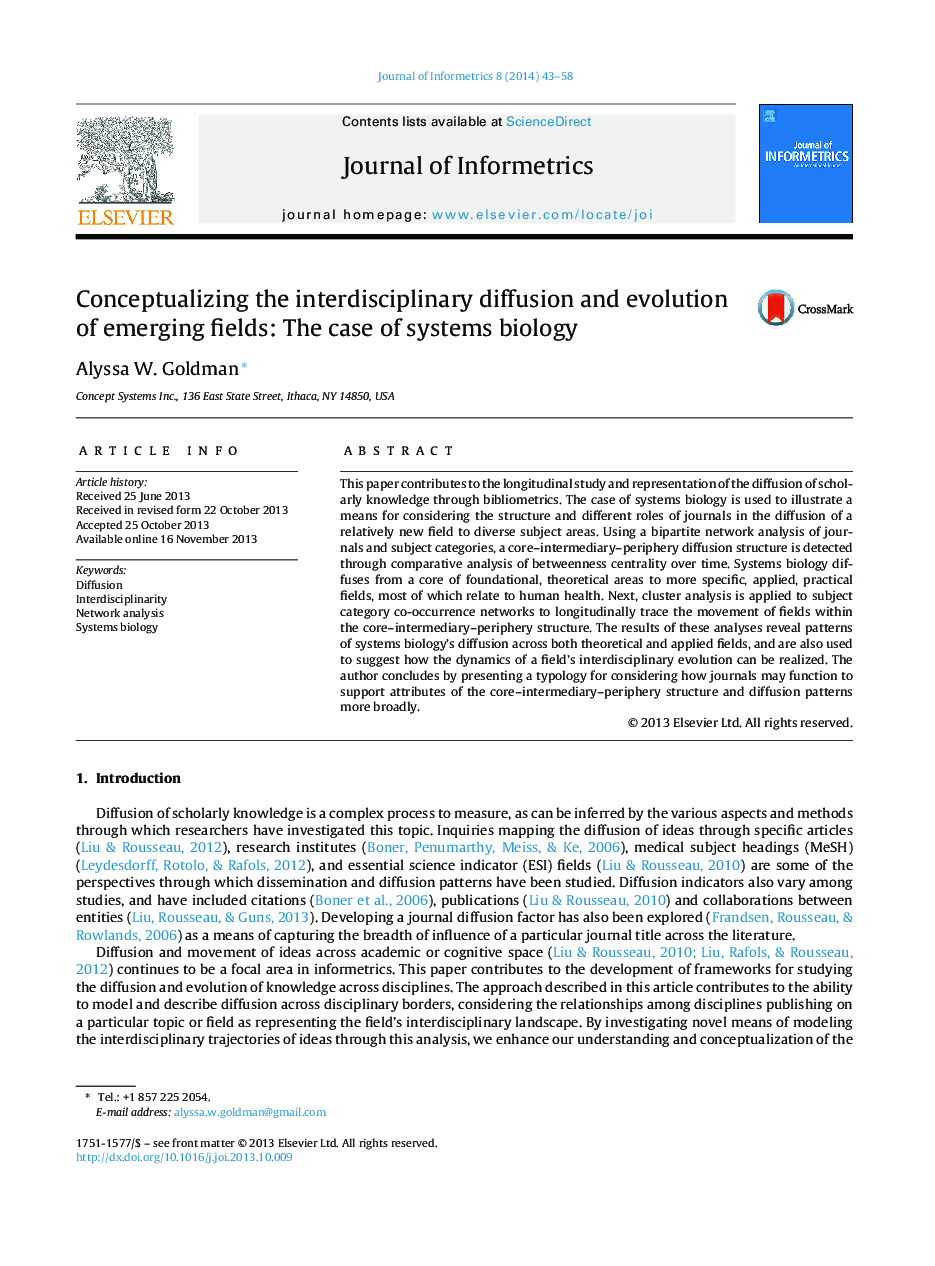| Article ID | Journal | Published Year | Pages | File Type |
|---|---|---|---|---|
| 523960 | Journal of Informetrics | 2014 | 16 Pages |
•Systems biology's interdisciplinary diffusion is studied using network analyses.•Journals and their subject categories are the units of the temporal analyses.•A core–intermediary–periphery structure is detected using betweenness centrality.•Cluster analysis is used to model interdisciplinary evolution within the structure.•A typology of journals’ functional roles in interdisciplinary diffusion is presented.
This paper contributes to the longitudinal study and representation of the diffusion of scholarly knowledge through bibliometrics. The case of systems biology is used to illustrate a means for considering the structure and different roles of journals in the diffusion of a relatively new field to diverse subject areas. Using a bipartite network analysis of journals and subject categories, a core–intermediary–periphery diffusion structure is detected through comparative analysis of betweenness centrality over time. Systems biology diffuses from a core of foundational, theoretical areas to more specific, applied, practical fields, most of which relate to human health. Next, cluster analysis is applied to subject category co-occurrence networks to longitudinally trace the movement of fields within the core–intermediary–periphery structure. The results of these analyses reveal patterns of systems biology's diffusion across both theoretical and applied fields, and are also used to suggest how the dynamics of a field's interdisciplinary evolution can be realized. The author concludes by presenting a typology for considering how journals may function to support attributes of the core–intermediary–periphery structure and diffusion patterns more broadly.
